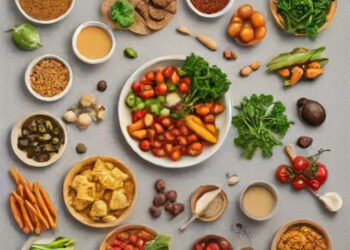In the food industry, the efficiency of the supply chain is vital to profitability and safety. When one link in the food supply chain, such as a farmer or packaging plant, isn’t operating at peak performance, every other link in the chain is negatively affected. Advanced technology in supply chain management has allowed food manufacturers that are willing to embrace new trends to explore more thoughtful and efficient processes.
There are many opportunities within the food supply chain to increase efficiency, safety, and productivity. By harnessing the power of the latest trends, you can ensure your supply chain is managed effectively, contributes to your profitability, and provides a safe and high-quality product to consumers. Using technology to streamline your processes and manage your supply chain helps you take control of all steps to ensure confidence in your product and consistency in manufacturing. Identifying these management trends and understanding how they can impact your own business processes will ensure you’re tapping into the resources needed to create a productive supply chain.
Established in November 2004 in Tokyo Japan, System11 Co. Ltd., is a cost controlling software developing brand for the hotel’s chef, food and beverage and the procurement department. The company developed F&B Cost Control System in 2010, launched Supplier Side on Cloud in 2013 and got Kitchen-Navi on Cloud in 2019.

While talking to Chef Bharath on cost-control, Yasuki Matsushita, Founder, System11 co., Ltd. highlighted that while across the globe, kitchen automation is taking centre stage so as to reduce human working hours, avoid wastage of food, chefs are unable to make use of cost-control software as they are mostly working on calculator or excel spreadsheets. He adds, “Cost is needed to calculate the combination of sales, cost and inventory. However, the traditional cost-control mediums being used by the chefs cannot manage the three types of amounts at the same time. On the other hand, management side people want a result which is profit at the end of month and cost-control is a process continued till the end of the month.”

Every restaurant should implement cost-control software, more so in this post-COVID era, as cost control and profit management are two sides of the same coin, he outlines. “Sales has been fluctuating because of COVID, thus right cost-control can yield profit even when the sales are decreasing,” stresses Matsushita. Especially in such unprecedented times of online orders, non-availability of stocks, natural calamities, price fluctuations, etc., a chef or an F&B manager can predict the consumption or sales for the next day by checking the sales of the previous few days.
Artificial-intelligence (AI) mechanism can be brought to the kitchen to provide alerts to the chefs, but AI needs too much of data to predict and the kitchen cannot input so much of data. Matsushita says that they use average of sales and cost to forecast at this moment because no other data is required.
Explaining more about Kitchen-Navi software and its unique aspects, he elaborates that restaurants in a town or hotels are the target audience for the same. “Kitchen-Navi navigates purchases and closing inventory in a month. It can be followed to maximise the profits,” he says. For expansion, Kitchen-Navi trusts majorly on social networking services.
THIS ARTICLE IS POWERED BY








